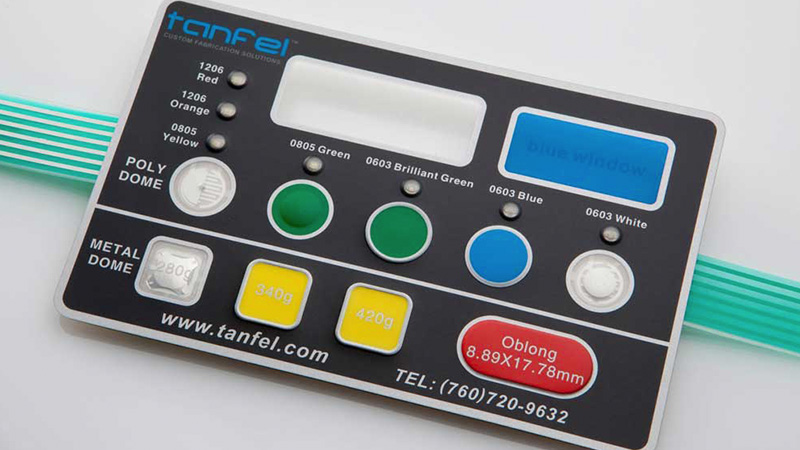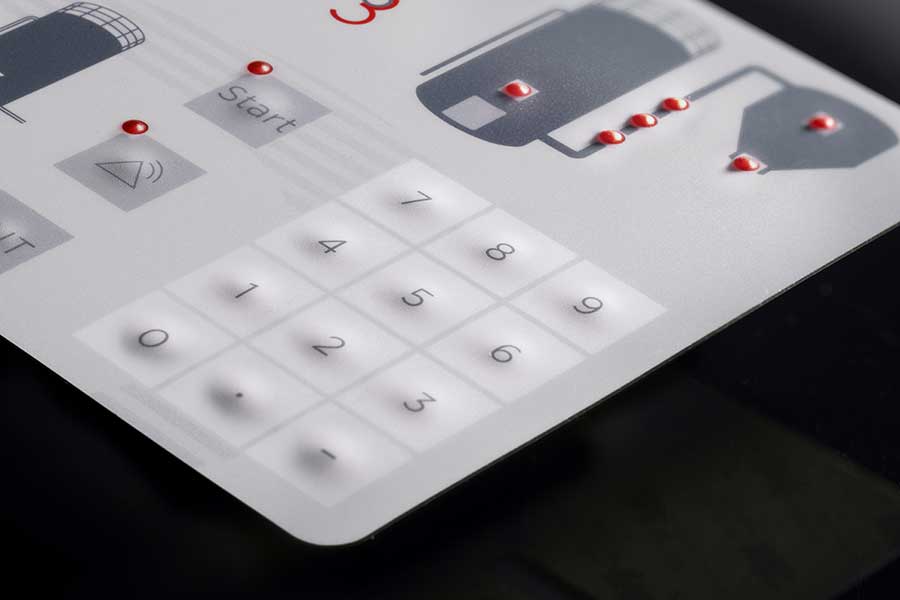The Role of Membrane Switches on the Development of Smart Wearables
The Role of Membrane Switches on the Development of Smart Wearables
Blog Article
Checking Out the Conveniences of Membrane Layer Switches for Modern Electronics
The expedition of membrane layer buttons in modern electronic devices supplies an interesting point of view on their myriad benefits, especially in terms of design versatility, resilience, and cost-effectiveness. These interfaces not just stand up to extreme environmental problems but also give a high degree of modification, which is progressively essential in today's competitive market. As markets continue to advance, the duty of membrane buttons in enhancing individual experience and functional efficiency warrants better assessment. Recognizing exactly how these elements can shape the future of electronic applications might expose insights that can influence layout and manufacturing methods dramatically.
Advantages of Membrane Layer Switches
Membrane buttons are increasingly favored in contemporary electronics due to their various advantages. One of the key advantages is their portable layout, which enables space-efficient assimilation right into numerous tools. This slim profile not only conserves area yet additionally adds to the general visual charm of electronic items.
One more advantage is their toughness. Membrane layer switches are commonly resistant to wetness, dust, and contaminants, making them optimal for use in atmospheres where exposure to severe conditions is a concern. This resistance extends the lifespan of the buttons, minimizing the requirement for frequent replacements and maintenance.
Additionally, membrane switches deal outstanding tactile feedback, enhancing individual experience. The responsive action is frequently made to provide a gratifying feeling upon activation, which can enhance user satisfaction and effectiveness.
In addition, the production procedure of membrane layer switches is cost-efficient, enabling lower manufacturing prices contrasted to typical mechanical buttons. This cost makes them suitable for a broad array of applications, from consumer electronics to industrial machinery.
Design Flexibility and Modification
The design adaptability and personalization options used by membrane switches further boost their appeal in modern-day electronic devices. These buttons can be tailored to satisfy details visual and practical demands, allowing makers to create gadgets that line up closely with brand identification and user preferences. With numerous choices in terms of shades, shapes, and sizes, membrane layer switches can effortlessly integrate right into diverse product designs, whether for consumer electronic devices, industrial applications, or medical devices.
In addition, the capacity to incorporate graphics and signs directly onto the switch surface area enhances usability while reducing the need for additional labeling. This integration not just simplifies production procedures however likewise adds to a sleeker general look. The design can be additional customized through features such as backlighting, responsive responses, and multi-layer building and constructions, offering improved individual communication.

Toughness and Ecological Resistance

Furthermore, membrane layer buttons can be crafted to be chemically resistant, making them suitable for applications in industrial settings where exposure to solvents and cleaning representatives prevails. The encapsulation of digital parts within the membrane framework offers additional security against environmental anxieties, making certain reliable efficiency even in tough conditions.
Along with physical durability, membrane layer switches display exceptional resistance to UV light, protecting against destruction and staining with time (membrane switch). This particular is particularly beneficial for exterior applications, where prolonged exposure to sunshine can endanger other button types
Eventually, the sturdiness and ecological resistance of membrane layer switches make them an optimal choice for a variety of modern-day digital tools, from medical equipment to customer electronics, ensuring consistent functionality and customer satisfaction throughout various applications.
Cost-Effectiveness in Production
Cost-effectiveness in production is a considerable benefit of membrane layer switches, making them a recommended choice for makers in different industries. The production process of membrane switches over typically includes less products contrasted to conventional buttons, which lowers raw material prices. This structured manufacturing process not just conserves cash but also reduces waste, straightening with contemporary sustainability goals.
Furthermore, membrane layer switches can be created using automated methods, enabling high-volume output with lowered labor costs. The combination of sophisticated printing modern technologies better improves efficiency, enabling producers to attain detailed styles and capabilities without incurring substantial extra expenditures. This scalability makes sure that production can adapt to changing market needs without compromising quality or raising costs.

Additionally, the light-weight nature learn this here now of membrane switches adds to set you back financial savings in shipping and handling, along with in the total design of electronic tools. By removing large components, manufacturers can optimize the overall item layout, thus enhancing market competitiveness. Overall, the cost-effectiveness of membrane switches over not just advantages producers financially yet likewise assists in technology and quick item development in the dynamic landscape of modern-day electronic devices.
Applications in Different Industries
Adaptability stands out as a trademark of membrane buttons, allowing them these details to find applications throughout a large range of markets. In the healthcare field, these switches are essential to clinical gadgets, giving user-friendly interfaces for tools like mixture pumps and diagnostic machines. Their resistance to dampness and easy cleansing make them suitable for atmospheres needing rigorous hygiene criteria.
In the automotive market, membrane layer switches contribute to the performance of control panels and control panels, offering a smooth, modern look while making certain durability against harsh conditions. Their light-weight style additionally sustains overall lorry efficiency.

Furthermore, commercial equipment utilizes membrane buttons for functional controls. Their robust nature and adjustable functions deal with the certain demands of diverse applications.
Conclusion
In final thought, membrane switches offer considerable benefits for modern electronics, find out here including design adaptability, resilience, and cost-effectiveness. membrane switch. Their adjustable functions and resistance to environmental factors make them appropriate for a large range of applications across numerous sectors. As technological needs remain to evolve, the convenience and efficiency of membrane layer switches over position them as an essential part in boosting user experience and driving advancement within the affordable landscape of digital devices
Report this page